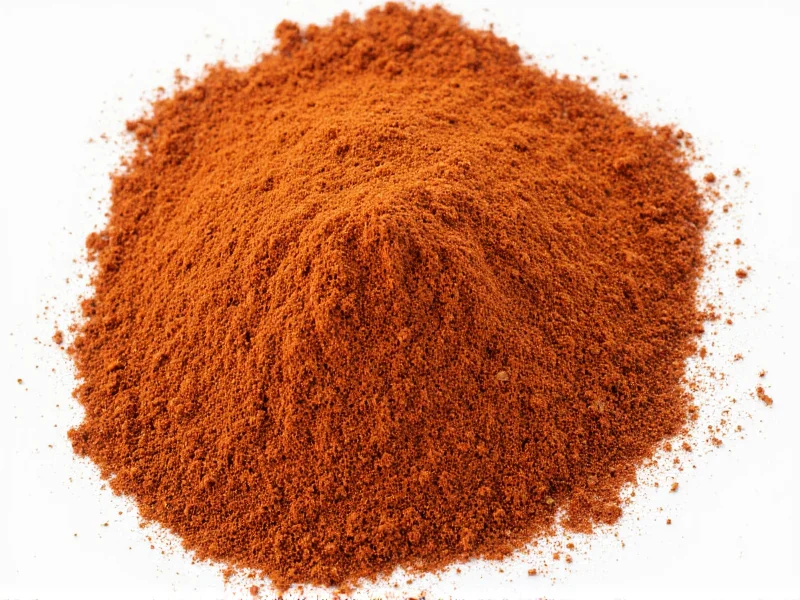When your recipe calls for mace but your spice cabinet comes up short, knowing the right substitute can save your dish. Mace, the delicate outer coating of the nutmeg seed, delivers a warm, citrusy flavor that's essential in many traditional recipes from baked goods to savory stews. Understanding proper mace replacement ratios and flavor profiles prevents disappointing results when this specialty spice isn't available.
What Exactly Is Mace and Why Substitutions Matter
Mace comes from the lacy red aril surrounding the nutmeg seed. When dried, it becomes brittle orange-red blades with a more delicate, citrus-forward flavor than its nutmeg counterpart. This unique spice enhances everything from béchamel sauce to apple pie, but its specialty nature means many home cooks don't keep it stocked regularly.
Unlike generic "spice replacement" advice, effective mace substitution requires understanding its specific flavor profile. Mace provides warmth without overwhelming heat, subtle citrus notes, and a floral quality that distinguishes it from plain nutmeg. The right substitute maintains your recipe's intended balance rather than altering its fundamental character.
Top Mace Substitute Options Compared
| Substitute | Ratio to Mace | Flavor Profile | Best Recipe Applications |
|---|---|---|---|
| Nutmeg | 1:1 | Warmer, earthier, less citrusy | Baked goods, creamy sauces, mashed potatoes |
| Allspice | 3:4 | Bright, peppery, with clove notes | Meat rubs, stews, pickling blends |
| Cinnamon-Nutmeg-Clove Blend | 2:1:1 parts | Complex warmth with floral notes | Savory braises, holiday baking, spice cakes |
| Garam Masala | 1:1 | Earthy with cardamom and cumin notes | Curries, lentil dishes, roasted vegetables |
| Pumpkin Pie Spice | 1:1 | Sweet with pronounced cinnamon | Desserts, breakfast dishes, custards |
Detailed Analysis of Each Mace Replacement
Nutmeg: The Closest Direct Substitute
Nutmeg makes the most straightforward mace replacement since they come from the same plant. Use equal amounts of ground nutmeg when substituting for ground mace. The primary difference lies in intensity—nutmeg delivers a warmer, earthier flavor without mace's distinctive citrus notes. For delicate dishes like béchamel or custards, reduce nutmeg by 25% to prevent overpowering other flavors.
When working with whole spices, remember that one mace blade equals approximately 1/8 teaspoon ground nutmeg. This mace to nutmeg conversion ratio proves invaluable for historical recipes specifying mace blades rather than measurements.
Allspice: The Savory Solution
Allspice earns its name from tasting like a blend of cinnamon, nutmeg, and cloves—making it an excellent mace alternative, particularly in savory applications. Use 3/4 teaspoon allspice for every teaspoon of mace required. Its brighter, slightly peppery profile works exceptionally well in meat dishes, stews, and pickling blends where mace traditionally appears.
Chefs preparing Jamaican jerk seasoning or Middle Eastern kibbeh often prefer allspice over mace for its more pronounced flavor that holds up during long cooking times. This allspice mace substitution ratio maintains recipe integrity while providing similar warming qualities.
Custom Spice Blends for Specific Applications
For recipes where mace plays a starring role rather than a supporting one, consider creating a custom blend. Combine 2 parts cinnamon, 1 part nutmeg, and 1 part ground cloves to approximate mace's complex profile. This blend works particularly well in:
- Traditional British meat pies
- German lebkuchen and other holiday baking
- Creamy pasta sauces where mace's floral notes shine
When substituting in delicate custards or light sauces, reduce the total amount by 25% to prevent flavor dominance. This approach to creating mace substitute from common spices gives you control over the final flavor profile.
Substitution Guidelines for Different Recipe Types
Baking Applications
In sweet applications like spice cakes or apple pie, nutmeg makes the simplest 1:1 replacement. For more complex desserts like speculoos or gingerbread, the cinnamon-nutmeg-clove blend better preserves the intended flavor balance. When substituting in delicate custards or crème brûlée, reduce nutmeg by 20-25% to avoid overwhelming the dish with earthiness.
Savory Dish Considerations
Savory recipes often use mace for its subtle warmth without pronounced nutmeg flavor. In these cases, allspice at 3/4 strength provides better results. For cream-based sauces like béchamel, use nutmeg at 1:1 ratio but add a pinch of lemon zest to mimic mace's citrus notes. When preparing traditional dishes like British pork pies or Dutch beef stews, garam masala makes an unexpectedly effective substitute due to its balanced warmth.
Common Mace Substitution Mistakes to Avoid
Many home cooks make these critical errors when seeking mace spice replacement options:
- Using equal amounts of allspice - Allspice's stronger flavor requires using only 3/4 the mace amount
- Substituting whole nutmeg for ground mace - Freshly grated nutmeg is significantly more potent than pre-ground
- Ignoring recipe context - A custard needs different substitution than a hearty stew
- Overcompensating with multiple substitutes - Combining nutmeg AND allspice creates flavor imbalance
Remember that mace's value lies in its subtlety. The best mace substitute for baking recipes often requires slightly less spice than the original measurement to maintain proper flavor balance.
When You Absolutely Need Real Mace
Certain traditional recipes simply won't achieve authentic results without genuine mace. These include:
- Classic British meat pies (where mace's floral notes cut through richness)
- Dutch speculaas cookies (mace provides distinctive top notes)
- Traditional béchamel for lasagna (mace's citrus balances dairy)
In these cases, consider making a special trip to a specialty spice shop or ordering whole mace blades online. Properly stored in an airtight container away from light, mace retains its flavor for up to two years—making it worth keeping stocked if you frequently prepare these dishes.











 浙公网安备
33010002000092号
浙公网安备
33010002000092号 浙B2-20120091-4
浙B2-20120091-4